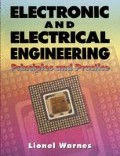Abstract
IN SYNCHRONOUS machines the rotor turns in synchronism with the e.m.f. developed or the alternating voltage applied. A synchronous machine can function either as a motor or as a generator and sometimes does both, as in the 1.8GW pumped-storage scheme at Dinorwig in N Wales, which uses six, 300MVA, reversible pump-generators. Virtually all the electrical power we use is generated by synchronous generators, some of which are among the largest of all electrical machines. They are large, not only because we need vast quantities of electricity, but also because large generators are cheaper per MW to construct and to operate, and are more efficient than small generators. A synchronous generator rated at 1000 MVA should turn more than 98% of the mechanical power input into electrical power.
Preview
Unable to display preview. Download preview PDF.
Author information
Authors and Affiliations
Copyright information
© 1994 L. A. A. Warnes
About this chapter
Cite this chapter
Warnes, L.A.A. (1994). Synchronous machines. In: Electronic and Electrical Engineering. Macmillan New Electronics Series. Palgrave, London. https://doi.org/10.1007/978-1-349-13012-2_17
Download citation
DOI: https://doi.org/10.1007/978-1-349-13012-2_17
Publisher Name: Palgrave, London
Print ISBN: 978-0-333-58000-4
Online ISBN: 978-1-349-13012-2
eBook Packages: EngineeringEngineering (R0)

